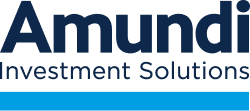Ride the policy noise and shifts
- Uncertainty - Elevated uncertainty surrounding US policymaking and fiscal path will shape the outlook for economies and markets over the next 12 months. Geopolitical risk, high debt levels and constrained fiscal space increase vulnerabilities.
- Divergences - Major economies display resilience but also diverging paths, with the US expected to slow down, Europe to post moderate growth and India to stand out. Differences in growth, inflation, and fiscal trends will drive divergence, notably in monetary policies.
- Mild risk-on allocation - This ‘rewiring’ of the global economy and financial markets will see equity rotation continue towards Europe and Emerging Markets. At the same time, yield curves are likely to steepen as investors demand bigger risk premiums for long-term bonds when short-term bonds benefit from lower policy rates.
- Resilience and diversification – Our stance is mildly pro-risk, with enhanced hedges against inflation and foreign exchange risks. Focusing on long-term themes and selective exposure to real and alternative assets may help investors navigate day-to-day swings and the breakdown of correlations.
The rewiring of the global economy and financial markets requires caution from forecasters, policymakers and investors. Indeed, the US approach to trade and international relations signals structural changes that will persist beyond the current administration.
Unpredictable policymaking sets an unfavourable backdrop for the economy and markets, but we also see opportunities linked to different asset prices. Despite high uncertainty and a weak growth outlook, major economies and business have proven resilient so far. The global picture remains positive for credit markets and we do not foresee a corporate profit recession.
Central Scenario: Weak growth with inflationary pressure¹
Global growth forecasts have taken a hit since the beginning of 2025 and the uncertainty about US trade tariffs will likely persist. We think tariffs will hurt growth more than boost inflation and imply higher real interest rates. Our base-case scenario is that policy uncertainty will subside over time, allowing for a more orderly relocation of supply chains with the average US tariff rate 15 percentage points higher than before the current administration took office. Global growth decelerates without major setbacks.
- The US economy should decelerate below its potential, to 1.6% in 2025-2026, from nearly 3% in 2023-24, as greater uncertainty and tariffs weaken demand. This is likely to lead to economic losses and a temporary resurgence in inflation, which in turn could hit corporate margins. Fiscal measures and deregulation should provide only limited relief. The US budget bill raises two major concerns. First, US debt is expected to rise by 3 to 5 trillion dollars over the next decade. Second, aggregate consumption will further reduce since expenditure cuts primarily affect lower-income segments and tax cuts benefit higher income groups. We anticipate the US deficit to near 6.5% in 2025. Considering impending economic slowdown, we expect the Fed will cut policy rates three times in H2, to reach 3.50% by end of 2025.
- In Europe, we see signs for optimism and potential for a more favourable growth/inflation mix despite the impact of the trade shock. The active establishment of new trading alliances, reduced trade tensions, lower interest rates, and a stronger Euro should favour a gradual pick-up in domestic demand and private credit. We expect the ECB will put a floor on growth with two additional rate cuts to 1.50% by end of 2025 and project GDP to near 0.8% in the Eurozone and in the UK in 2025 and 2026. In addition, Europe’s attractiveness is emerging as a structural theme, due to its greater stability, upcoming reforms and investments and a stronger Euro.
- Emerging Markets benefit from an overall positive growth and inflation path, easing monetary policies and a growing middle class. Fading US economic exceptionalism and a weakening US dollar also result in enhanced attractiveness for EM. While the pending sectoral tariffs present risks, they also fuel the development of localised supply chains that benefit EM. India and ASEAN emerge as key beneficiaries of these structural shifts and remain major drivers of growth. We estimate 2025 and 2026 GDP growth at 6.6% and 6.4% for India, and at 4.3% and 3.9% for China.
- Main risks to our central scenario – A downside scenario could stem from a stagflationary environment triggered by adverse geopolitical events or policy decisions, such as an escalation in the trade war or lower growth and higher deficit in the US. Our upside scenario would require policies and dynamics that strengthen the disinflationary trend, with productivity gains.
Investment implications: opportunities in global rewiring
We keep the view that a late-cycle is the most likely scenario, indicating a mildly pro-risk stance. However, asset allocation should also factor in the increased likelihood of the quite polarized alternative scenarios that higher geopolitical and inflation risks may trigger, as well as shifting correlations between the US dollar (USD), equities and bonds.
A key conviction is our expectation of a further steepening of benchmark yield curves, driven by higher fiscal risk, abundant bond issuance and rate volatility. In addition, we expect earnings growth to decelerate to 6%, but we do not anticipate an earnings recession.
Our dynamic asset allocation is designed to seize opportunities emerging from market turbulences and to withstand high downside risks on multiple fronts. It involves a well-diversified equity approach, tactical management of fixed income duration and curve positioning, diversification in resilient domestic stories across geographies, and enhanced hedges. In the FX space, the Japanese Yen and the Euro screen the best, the Swiss Franc is already rich, while Scandinavian currencies and the Australian Dollar look relatively more attractive.
- Fixed Income – We expect steeper yield curves and rate volatility, and thus favour a flexible approach to diversify away from the US across global markets. We favour European and EM government bonds, which may benefit from a good growth and inflation mix and weaker USD, we are tactical on duration. In credit, we favour high-quality credit and prefer European over US investment-grade. We are neutral on high-yield as spreads may rise towards the end of the year. In terms of sectors, we like Financials and subordinated credit. Bank subordinated debt could prove one of the most interesting segments.
- Equity - Rotation will continue away from the US market and DM equity should generate low single digit returns in H2. We favour global equities with a focus on valuations, solid margins, and careful sector selection through major themes such as European defence and infrastructure, AI, US deregulation, corporate governance reform in Japan and ‘Make in India’. We are positive on European mid-caps, equal-weighted US, and high dividend equities in Japan. Sector wise, we favour a mix of cyclicals and defensives and prioritise domestic and service-oriented sectors. We prefer Financials and Communication Services over Energy and Materials, with Utilities as a hedge.
- Emerging Markets – EM assets have positive momentum in H2. We like EM bonds, both in hard and local currency, as yields exceed those of DM bonds and provide a buffer against rising US Treasuries yield volatility. EM equities are well-positioned to benefit from structural shifts in countries adapting to global economic realignments. Our focus is on resilient and domestic-oriented sectors, defense and IT.
- Diversification & Hedges – Inflation risk (either stagflation or hyperinflation), USD weakness, and shifting correlations appear as long-term patterns which require hedges. Gold and commodities are good hedges against inflation risks, infrastructure and private debt provide stable cashflows. In private markets, selectivity will be crucial due to huge capital inflows. Currency diversification is also crucial, in particular for non-USD investors.
[1] Projections are based on information and policy measures available as of 17 June 2025.







